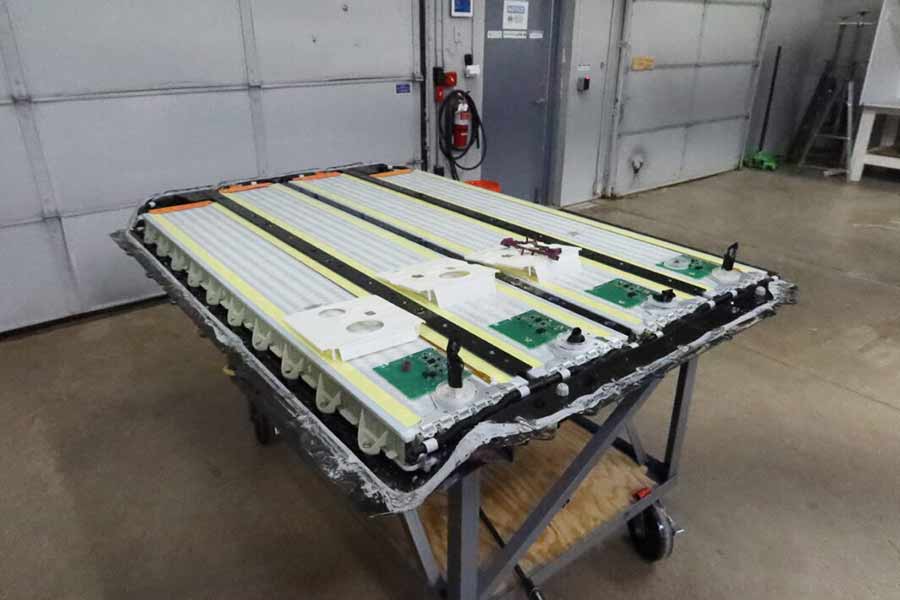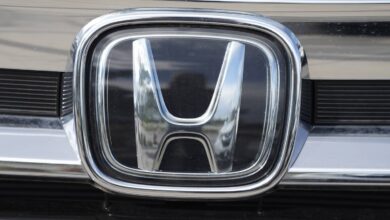From Florida floods to Idaho desert: Understanding impacts of flood damage on vehicle batteries

IDAHO FALLS – Out on the Idaho National Laboratory desert Site sits an electric vehicle (EV) enthusiast’s dream: nine high-performance, battery-powered cars including four Tesla models (S, 3, X and Y); a Porsche Taycan and a Lucid Air. Each car boasts some of the most advanced EV technology available, allowing drivers to accelerate from zero to 60 mph in just a few seconds while sitting in a futuristic cocoon of touch screens and heated seats.
But upon closer look, these cars have seen better days. Sitting against the background of the snowy Idaho desert, their once shiny paint jobs are now speckled with water spots. The cars are covered with dirt, sediment, mold and mildew, both inside and outside. Many of their hoods have been manually sealed with vehicle tape, and several of their front and back fenders and sideview mirrors are drooping. A few of the windshields are so filthy that passersby can’t see into their luxury interiors.
Electric vehicles offer some clear advantages over gasoline-power cars including zero emissions and lower operation and maintenance costs. But they also present some new challenges. Recent storms have revealed that seawater-flooded EVs can pose safety concerns for passengers, emergency responders and recovery personnel. The energy left stranded in the battery after submersion in salt water can lead to catastrophic events, like fire.
The cars were all flooded with seawater during Hurricane Ian, which compromised the batteries of as many as 5,000 electric vehicles in 2022. Of those, 36 of the impacted EV batteries caught fire due to thermal runaway, an uncontrollable increase in temperature that can occur in damaged batteries.
At the request of the National Highway Traffic Safety Administration (NHTSA), INL engineers conducted teardown research on the EVs to understand the impacts of flooding on their batteries. They studied 10 vehicle battery packs. Following the teardown study, one of the vehicles went directly to a NHTSA test facility, and the other nine were sent to INL.
“Some of the main battery packs were partially submerged, and some were fully submerged,” said Tanvir Tanim, the principal investigator on the research project at INL. “Five of the 10 batteries did not show evidence of water in their main compartment; the other half did.”
Of the nine electric vehicles examined by INL researchers, eight exhibited varying levels of water intrusion within either the penthouse compartment (a compartment attached to the battery pack housing the power electronics) or the battery pack itself. Five of these vehicles showed evidence of water infiltration into the primary battery-pack compartment. All the 12V onboard auxiliary batteries were found to be completely discharged without showing any evidence of catastrophic failure.
Tanim and his team identified multiple potential pathways for water ingress, including manufacturing imperfections, improper component installations and component failures. However, researchers concluded that the volume of water permeating both compartments was insufficient to trigger any catastrophic events involving the batteries. Nonetheless, flood-damaged EVs are susceptible to corrosion and mold growth, presenting safety risks if these vehicles remain operational.

Additionally, the team observed that nine of the 10 EV main battery packs hadn’t fully discharged, even after approximately 10 months of storage. These charge levels indicate that a substantial amount of energy remains stranded within the EV battery packs despite exposure to water and/or long storage.
“Stranded energy at an unknown state due to either a collision or natural disaster could pose major safety concerns to anyone who comes into contact with an electric vehicle,” said Tanim.
Tanim and his colleagues will continue examining the impacts of flooding on vehicle batteries. They are building an immersion test facility for testing EVs and battery packs at INL. This facility should be available for testing by this summer. Once it comes online, Tanim and other vehicle infrastructure researchers at the lab will conduct full-scale immersion testing to better identify the root causes of flood-induced battery problems.
With the Hurricane Ian vehicles, the team lacked the advantage of assessing the battery’s condition prior to flood exposure. By conducting comprehensive examinations before, during and after immersion tests, they aim to identify the most likely factors contributing to fire incidents after submersion.
“Already, we understand so much more about how seawater immersion can impact battery health,” Tanim said. “As we continue to grow our knowledge, we’ll be able to ensure that widespread electric vehicle adoption can be implemented in the safest possible manner for everyone on the road, including first responders during natural disasters.”
=htmlentities(get_the_title())?>%0D%0A%0D%0A=get_permalink()?>%0D%0A%0D%0A=htmlentities(‘For more stories like this one, be sure to visit https://www.eastidahonews.com/ for all of the latest news, community events and more.’)?>&subject=Check%20out%20this%20story%20from%20EastIdahoNews” class=”fa-stack jDialog”>



